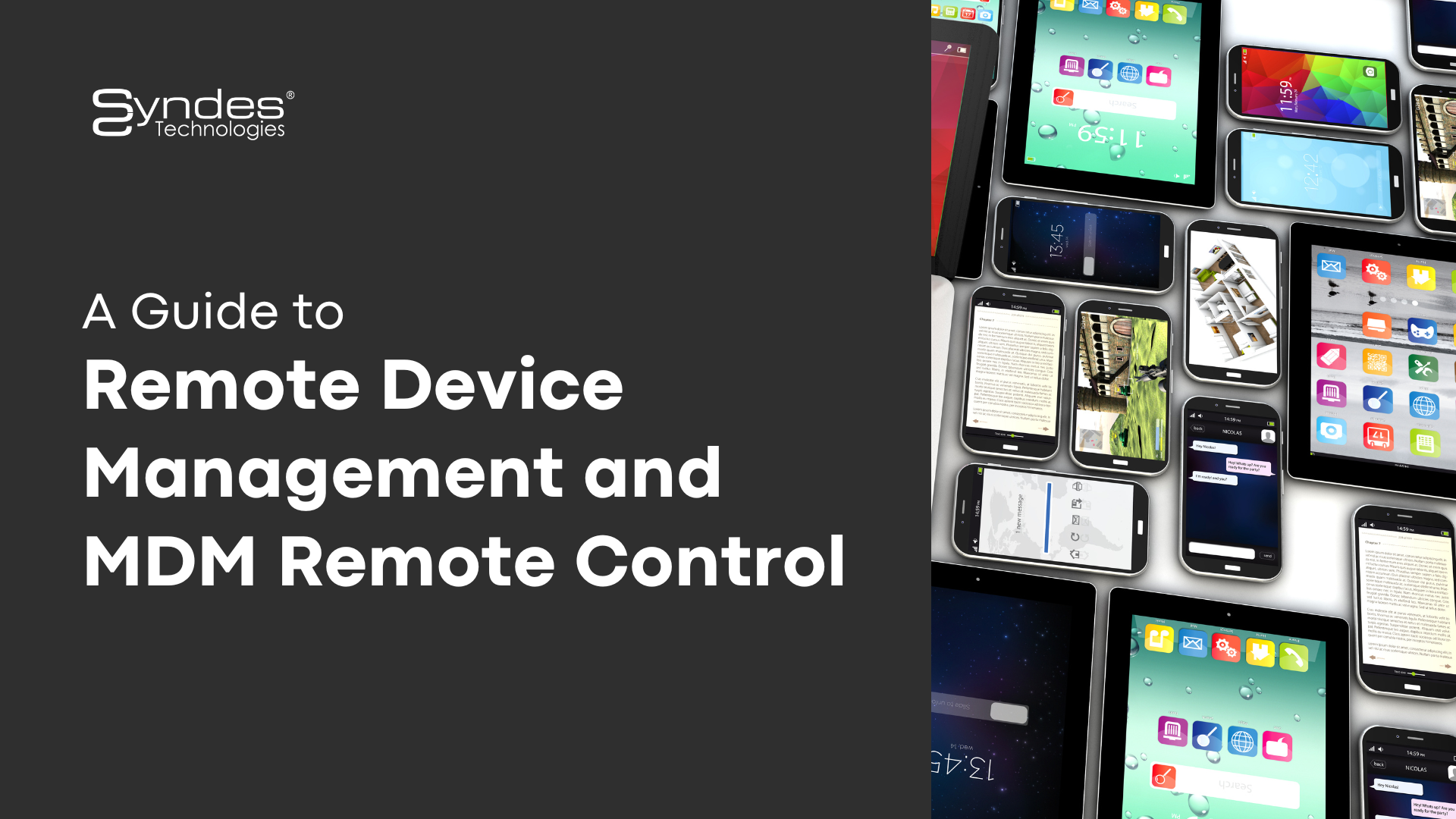EMM Vs MDM
With the phenomenal rise of mobile devices in the workplace, mobility solutions have now become vital for management, accessibility, and security of these devices.
Mobile Device Management refers to the administration of mobile devices, and spawned similar strategies like Mobile Application Management, Mobile Content Management, Identity and Access Management etc. Gartner in 2014 formally adopted the term Enterprise Mobility Management, which encapsulated all these terms.
Some people in the mobility space still use EMM and MDM interchangeably, even though both programs have evolved differently, and they largely differ in the security controls they offer.
So, let’s understand what your organization requires more – MDM or an EMM?
Mobile Device Management
EMM Vs MDM implies that a customer should have complete clarity between the two set of solutions before making a business decision. Mobile Device Management is administrating and controlling mobile devices in a corporate setup. MDM is critical to counterbalance the security concerns introduced by a variety of mobile devices at work. These devices (company owned or employee-owned) offer more productivity and agility to the employees who can work from any location and any time.
Aspects of MDM
- Device Enrollment: A mobile device will need to be registered with the organization’s MDM solution, before using it for business purpose.
- Device Provisioning: Once enrolled, the device would be configured with MDM software to thwart a variety of security issues, as well as to be managed by the organization’s IT admin.
- Device Security: Security managers can distribute security configurations, data settings, resolve patches, and remotely troubleshoot any issues, security or otherwise on the devices.
- Device Monitoring and Reporting: MDM helps in location tracking to locate lost or stolen devices, monitor device for malware infiltration, and report issues in real-time.
- Remote data wiping: In case of device loss, MDM solution can remotely wipe the data on the device.
- Enforce security policy: MDM can help configure devices to enforce the security policy of the organization, like strong passwords, blocking certain websites or installation of apps etc.
- Data loss prevention: Automatic data backup to prevent accidental data loss. Protecting data to be saved on a USB port or a third-party email server.
MDM lays the foundation of enterprise mobility for organizations, which have remote work culture and BYOD policy. MDM provides a centralized platform compatible with different device types and with different operating systems (MDM for Android, MDM for iOS, MDM for Windows, etc.)
Enterprise Mobility Management
Mobile devices have evolved from communication tools to powerful computational devices and are increasingly being used for complex business applications to mobilize and streamline corporate and IT processes. Moreover, as employees increasingly use their personal devices for work, they expect more capabilities, apart from just being able to use their device on a company network.
- Ability to access not just emails or data, but also work-related applications, and proprietary information on personal devices.
- Ensuring the privacy of their personal data and personal device usage.
- Ability to migrate to a different device.
Enterprise requirements for corporate data and application security have also expanded. Instead of solely fortifying the devices, they now need to manage and protect the information and business apps on mobile devices.
- Granular and extensive controls over corporate data, apps, emails, and platforms.
- Enterprise-grade security to every device.
- Customized management based on permitted access level for each employee, device, or network.
- Scalable solution to support an array of devices and services.
Enterprise Mobility Management (EMM) is a more evolved, sophisticated, and scalable set of features to manage enterprise devices, apps, content, and information. EMM encapsulates MDM, MAM, MCM, App Wrapping, Containerization, Identity Management features in a comprehensive, centralized solution.
EMM includes the following features apart from MDM:
- Mobile Application Management
MAM provides in-depth management and security of apps by monitoring and evaluating app health, restricting malicious apps, configuring, deploying and removing apps according to company policy.
- App Wrapping and Containerization
Though a part of MAM, app wrapping and containerization segregates corporate and personal apps and data on mobile devices. This helps employees switch personas on the devices without ceding control to their private information. It also makes it easier for the organization’s IT to focus only on corporate resources for operations like monitoring, securing, or wiping etc.
- Mobile Content Management
MCM allows for a secure environment to collaborate, store, and access collaborate corporate documents, information, and data.
- Identity and Access Management
Identity and access management help enforce the enterprise security policy by employing controls and determining access levels based on employee designation, safe or unsafe outside networks, allowed devices, and whitelisted apps or sites.
EMM also plays an important role in controlling and securing cloud-based computing, applications and data storage.
Closing Thoughts
EMM covers a broader set of functionalities for larger enterprises which need a comprehensive set of features to cover their mobility needs – remote work, employee devices accessing corporate data, connecting from external networks into your organization, remote servers, and cloud-based applications.
You will need MDM when you only need to manage and secure mobile devices and wireless solutions which connect to the corporate network.
So, you need to identify, analyze, and evaluate your organization’s security goals before investing in MDM or EMM solution.





